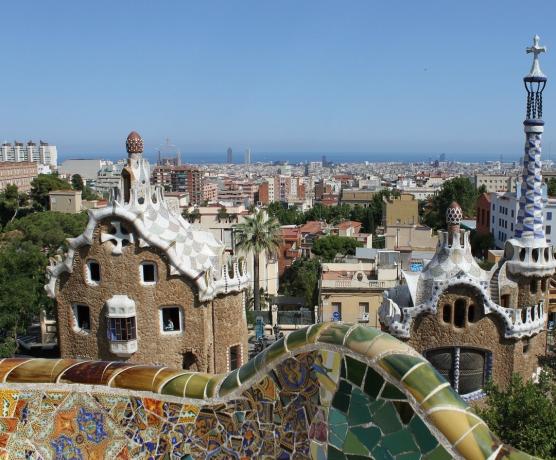The Persistence of Memory (or The Persistence of Memory) is a 1931 surrealist painting by Spanish artist Salvador Dalí.
First shown in Julien Levy Gallery in 1932, since 1934 the painting has been in the collection of the Museum of Modern Art (MoMA) in New York City.
 Picture The Persistence of Memory, by Salvador Dalí.
Picture The Persistence of Memory, by Salvador Dalí.
With its strange subject matter and dreamlike atmosphere, Salvador Dalí's painting has become a well-known symbol of surrealism.
The masterpiece of melting watches incorporates the sensibilities that define the experimental and eccentric genre.
To contextualize the place of the iconic piece in Art History, it is necessary to understand its influences unique, examine their symbolic content and appreciate the artist's avant-garde approach in his creation.
Historical context of painting: The Persistence of Memory
Persistence of Memory was painted in 1931, at the height of the Surrealist Movement. During this time, innovative artists explored ideas of automatism and self-awareness in their work.
 Salvador Dalí, Spanish artist responsible for the work: The Persistence of Memory.
Salvador Dalí, Spanish artist responsible for the work: The Persistence of Memory.
This experimental approach to art has culminated in a tendency towards a peculiar subject that evokes dreams and challenges perceptions.
As a central figure in the movement, Salvador Dalí immersed himself in this artistic mentality, which he considered revolutionary and liberating. "Surrealism is destructive, he explained, "but it only destroys what it considers to be handcuffs that limit our vision."
When Dalí painted The Persistence of Memory, his artistic practice was guided by the peculiar "critical-paranoid method". Developed by the artist in 1930, the technique is based on paranoia and self-induced hallucinations to facilitate the creation of a work of art.
This method was particularly instrumental in creating the "hand-painted dream photographs" of Dalí, a collection of works that are stylistically rooted in realism and not yet realistic in subject matter.
5 fun facts about The Persistence of Memory
1. The Persistence of Memory was painted in the middle of a hallucination
Around the time of the painting's creation in 1931, Dalí perfected his "critical-paranoid method". The artist would try to enter a meditative state of self-induced psychotic hallucinations, so that he could make what he called "hand-painted dream photographs".
"I am the first to be surprised and often terrified by the images I see appear on my screen. I register without choice and as accurately as possible the dictates of my subconscious, my dreams."
2. The exhibition of the work in New York was due to an anonymous
After his exhibition at the gallery, a patron bought the piece and donated it to the Museum of Modern Art in 1934. It has been one of the highlights of the MoMA collection for over 80 years.
3. Einstein's theories may have influenced Dalí
The Persistence of Memory provoked considerable academic debate as scholars interpreted the painting.
Some critics believe that the part's melting clocks are an answer to Albert Einstein's theory of relativity. In her book Dalí and Surrealism, critic Dawn Ades writes: "soft clocks are an unconscious symbol of the relativity of space and time."
4. The painting was inserted and frequently cited in pop culture
The Persistence of Memory was referenced on television in The Simpsons, Futurama, Hey Arnold, Doctor Who and Sesame Street.
Likewise, it was alluded to in the animated film Looney Tunes: Back in Action, in the comic book The Far Side, and in video games like EarthBound and Crash Bandicoot 2: N-Tranced.
5. The painting made Dalí famous at the age of 28
Dalí started painting when he was 6 years old. As a young man, he flirted with fame, working with Spanish filmmaker Luis Buñuel on his groundbreaking shorts Un Chien Andalou and L'Age d'Or.
But Dalí's big opportunity didn't come until he created his surrealist work. The press and the public went crazy with it when The Persistence of Memory was shown in Julien Levy Gallery, in New York, in 1932.
See also the meaning of surrealism and the 5 characteristics of surrealism.


